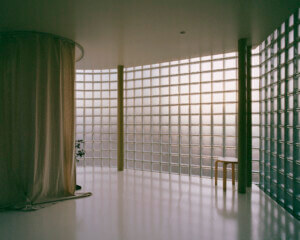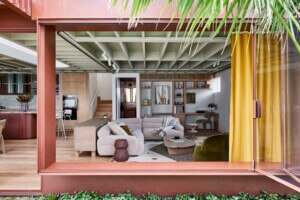Architect: Angelo Candalepas Associates
Location: Sydney, Australia
Completion Date:September, 2022
Located a block from Sydney, Australia’s Hyde Park, 116 Bathurst Street has brought a facade of apses and arches to the city. Also known as The Castle, the 37-story tower contains retail and residential spaces, in addition to a hotel. The design competition for 116 Bathurst began in 2013, and the building was completed this month following a four-year construction process.
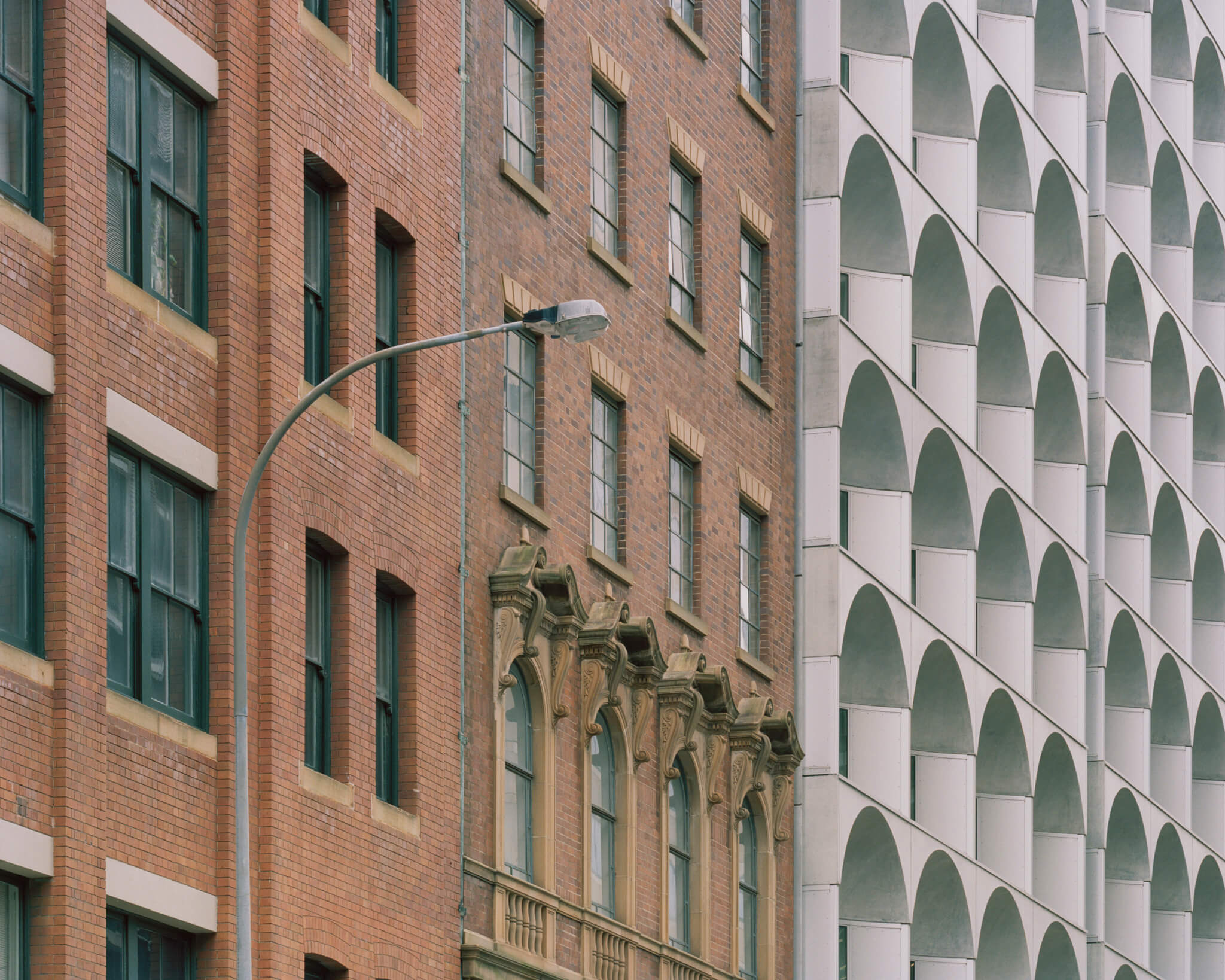
The Castle is formed by a 10-story podium adjacent to the historic Porter House with a tower extending from the podium that cantilevers over the Porter House. The Porter House is a 142-year-old heritage-protected building, which served as inspiration for The Castle’s design. A cast-in-place concrete bridge, with an open passageway underneath, connects the two buildings. This allows guests to go between the reception and public areas—located in the Porter House—and the rooms, located in the new podium. Ground-floor retail separates two entrances, accessible from neighboring streets. The uppermost five stories of the tower are set back in accordance with the city’s solar access height plane regulations near Hyde Park, and contain stepped gardens.
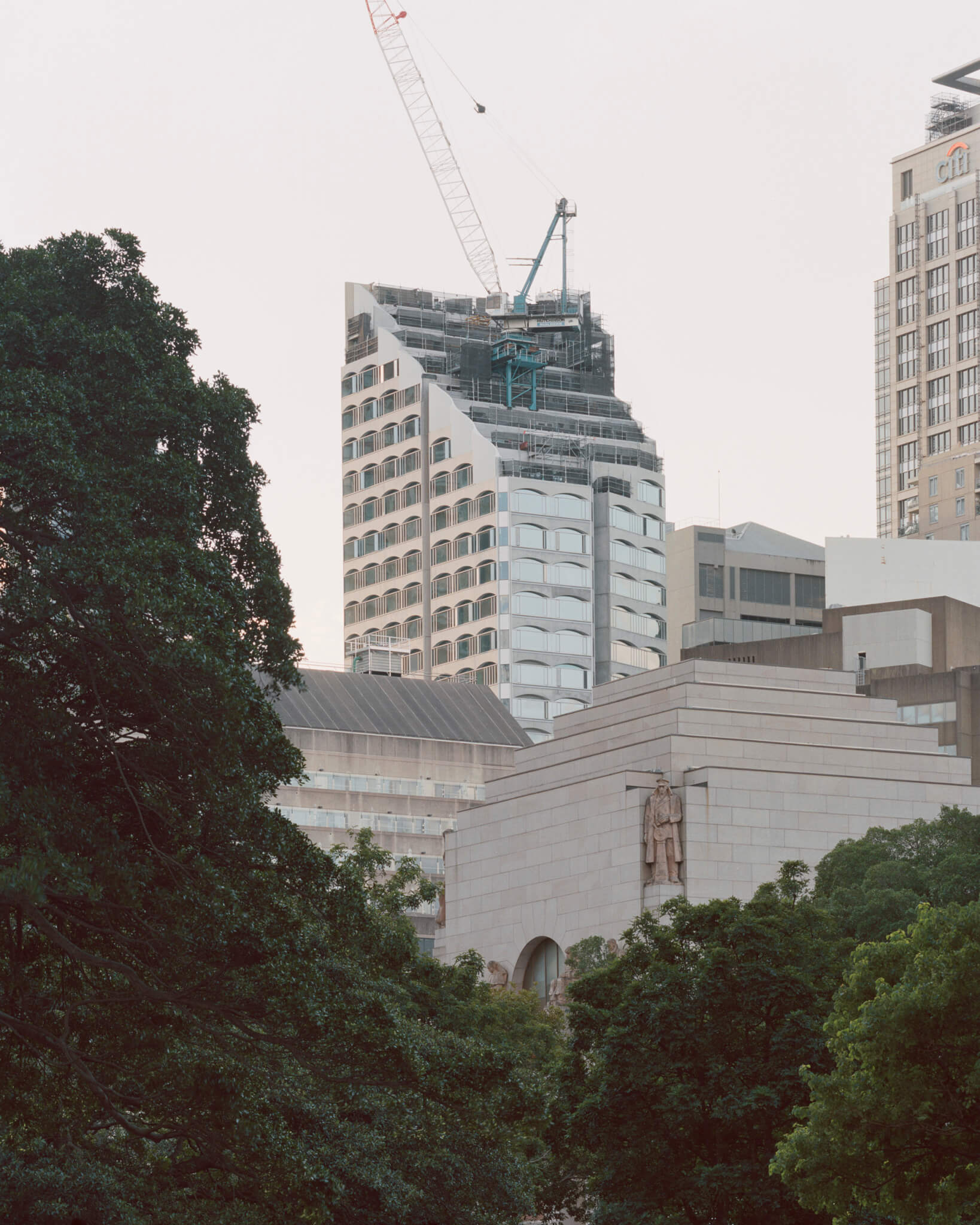
The podium’s facade was built with curved, in-situ concrete slab edge ribbons on the south- and east-facing sides of the building. The window systems are housed between the ribbons, constructed from aluminum panels and glazing. The north- and east-facing facades, adjoining the Porter House contain a section of the exposed-concrete core of the building, and a unitized curtain wall constructed with sections of fiber cement infill panels. The facade adjoining the Porter House is complete with the bridge, whose facade is characterized by steel-framed glazing. The scale of the podium was designed to be consistent with its urban context, “anchoring the building in a uniform and simple expression such that the corner is prioritized,” said Angelo Candalepas Associates director Angelo Candalepas.
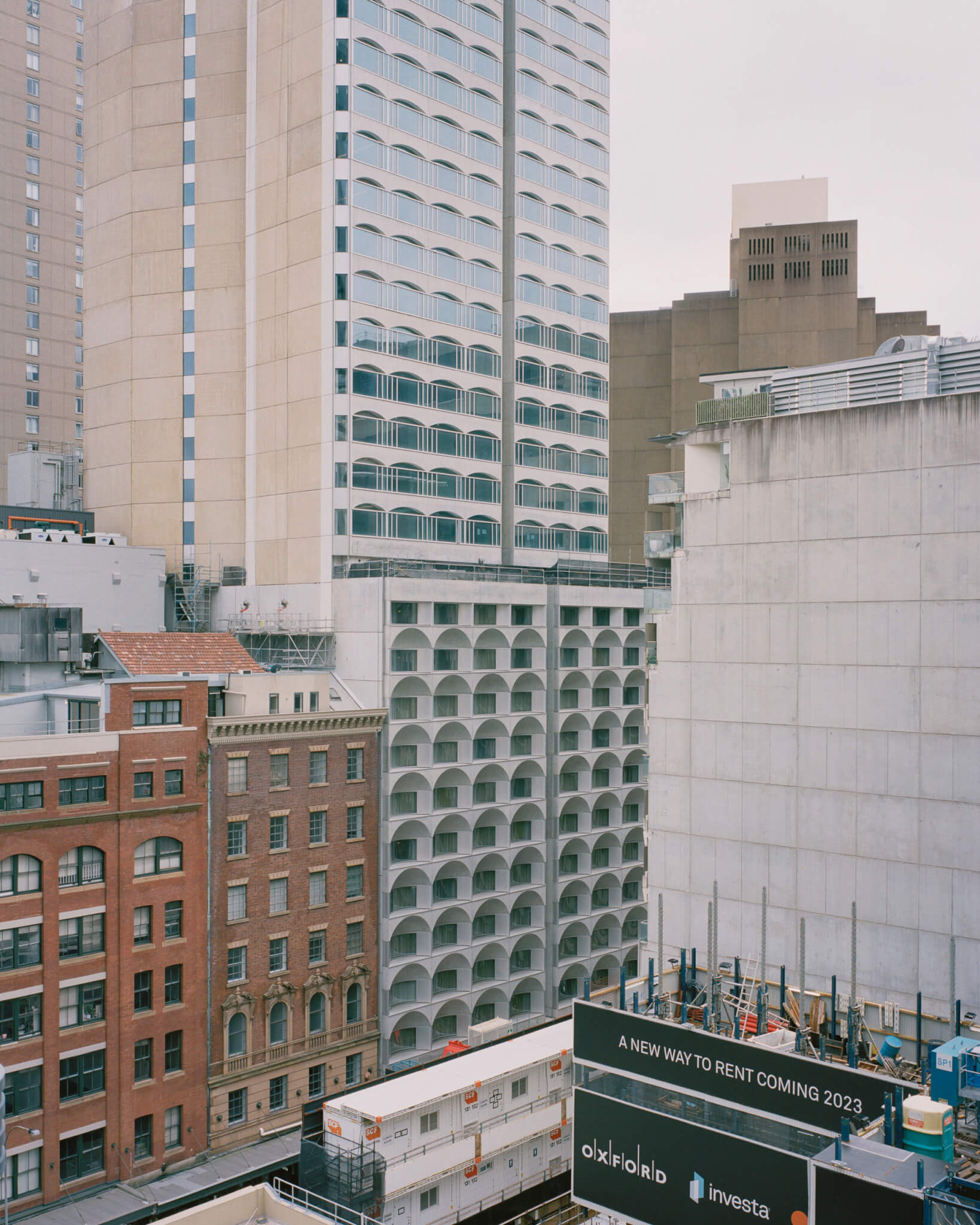
The facade of the residential tower was constructed with arched and flat precast concrete elements, as the apse and arch shapes of the podium are continued, albeit in a slightly different proportion, on the street-facing facade of the tower. Aluminum casements frame the glazing—which contain up to eight types of insulated glass units—on the north, south, and east faces of the tower. The west-facing facade was built with “loadbearing precast concrete and a unitized curtainwall, with a combination of fixed glazing and casement, and louver windows for natural ventilation to communal spaces.” As Candalepas told AN, “the chosen materials and forms of the building have been prompted from the surrounding heritage buildings and setting.” The form of the apse-shaped windows was inspired by the Porter House’s arches, with the historic form adapted with contemporary materials. Candalepas said that they considered glass fiber reinforced concrete during design development, but that the cast-in-place concrete was most suitable for durability, maintenance, and Sydney’s climate.
Candalepas noted that while concrete became the clear choice, it proved for a “challenging” construction process as errors in its pouring could not be covered up. Deflection of the formwork led to a higher degree of deviation than anticipated, which complicated the on-site installation of factory-produced window modules. However, the resulting facade’s uniformity is consistent up the building.
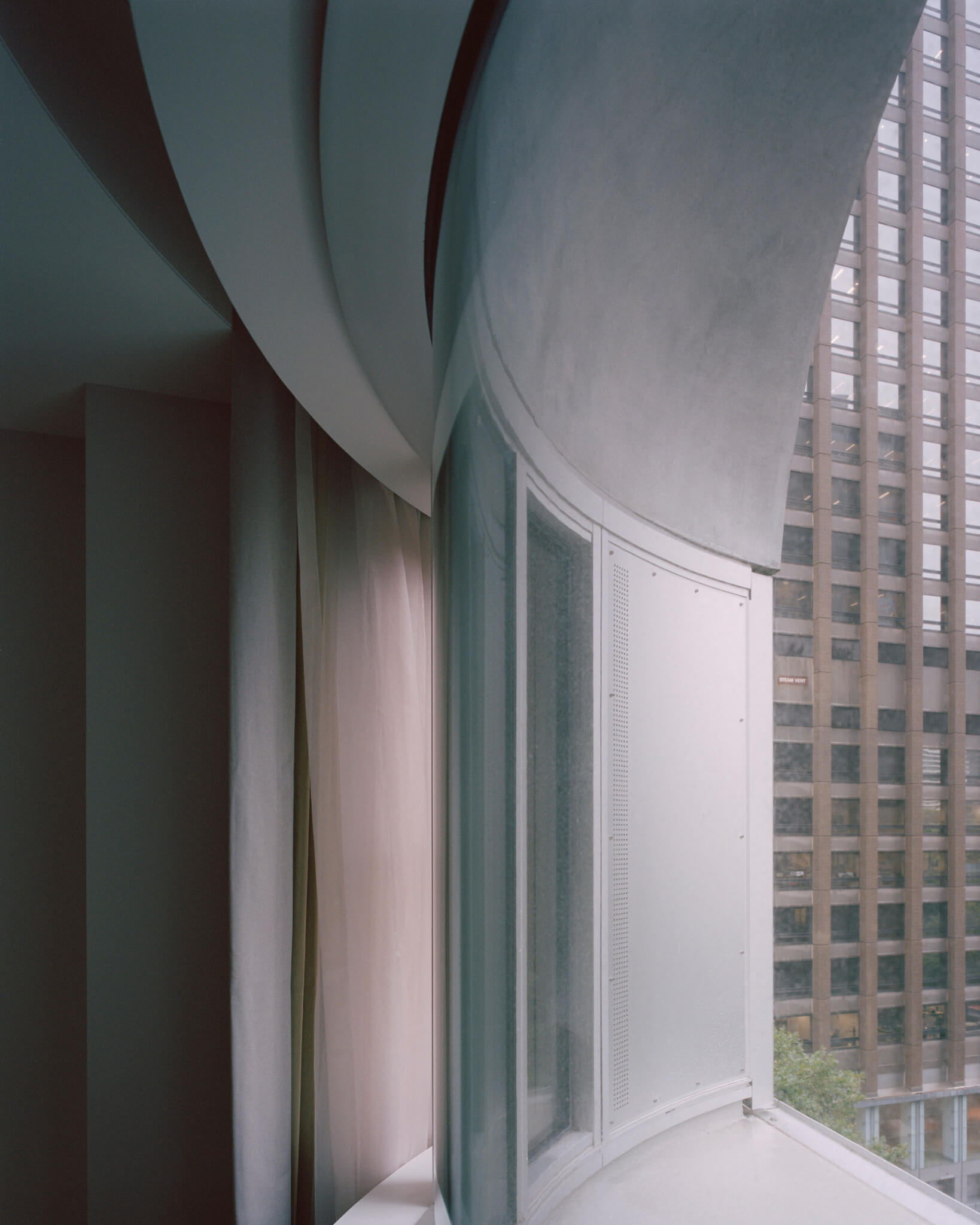
Angelo Candalepas and Associates work with the facade engineer, Surface Design, and subcontractor, G.James, prior to construction documentation, reviewing shop drawings early in the design process. The design team worked with the main contractor, who constructed full-scale prototypes of the facades for durability testing.
The design team considered a series of environmental factors for the facade, contributing to an “efficient use of resources,” in the words of Candalepas. They emphasized that the light color of the concrete and panels, and protection applied to the glazing, improved passive solar gain. All windows were double glazed, and the living rooms of the residences were oriented north to “minimize unwanted western sun access.” The overall facade design and orientation maximized daylighting, which will limit operational energy costs in terms of heating and artificial lighting. Environmental considerations also went into the tiered garden, which was planted with native species, can absorb rainwater runoff, and will reduce heat gain on roof levels.

Rather than adding environmental considerations to the building in pieces, the design of The Castle remains consistent across its faces. While the apse motif carries up the tower above the podium, perforated aluminum panels band the east-facing facade of the tower, giving a more modernist look to the faces of the residences.
Project Specifications
- Architect: Angelo Candalepas Associates
- Location: Sydney, Australia
- Completion Date: September, 2022
- Contractor: Hutchinson Builders
- Structural Engineer: BG&E
- Facade Engineer: Surface Design (pre D&C) / G.James (post D&C)
- Facade Contractor: G.James
- In-situ and Precast Concrete:Keim Concretal-Lasur Mineral Silicate Wash
- Windows:G.James Series 415, 445, 451, 475, 475, 478, 651, 579; Jalousie Glass Louvers
- Panels: Cemintel Barestone Natural/Raw finish, 9mm thick
- Insulation: Rockwool
- Hardware: Assa Abloy; Giesse; Schlegel








